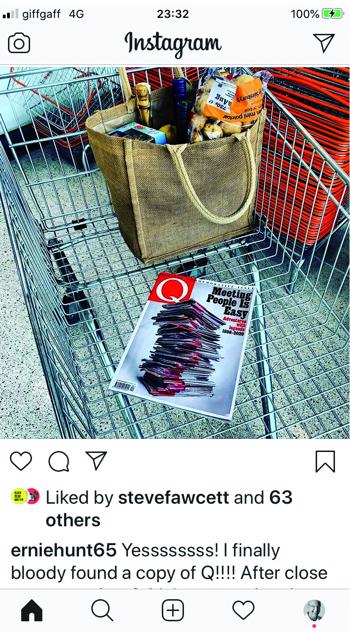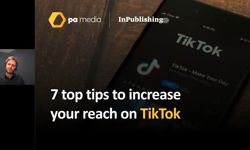
Good design is the silent ambassador for your brand. Good design lets you hear what isn’t being said. Good design makes your audience feel included.
To take advantage of this publishing superpower, every single question about your design strategy must start with understanding the audience. Not an intermediary, but the very end user – the customer.
It’s not enough to know who they are; what’s important is to grasp what their real goals are and what truly motivates them.
Design means different things to different people. For some, it’s decoration, for others, it’s problem solving. For this article, I am using ‘good design’ to describe the way publishers can present their brands to maximise their profit.
We need to address the fact that Covid-19 has driven a bus through yours, mine and everyone else’s balance sheets. This is not the time to be thinking about nice-to-haves, this is about extracting every single shred of revenue in order to get through this next quarter.
However, once you’ve cut budgets, furloughed staff and cancelled development, you still have two things left – your brands and your customers.
These will always produce results, but as business legend Peter Druker noted, the only way to do it is through marketing and innovation.
And to be effective, marketing and innovation need to be executed to a high standard. In other words, be well designed.
The bottom-line value of good design has been long established. McKinsey, in particular, have reported extensively on the matter: “Companies that excel at design grow revenues and shareholder returns at nearly twice the rate of their industry peers.”
But what relevance does this elevated view hold for small business? How can ‘excelling at design’ help publishers trade out of the biggest recession in living memory?
Here’s six places to start.
1. Know what good really looks like
The legendary Milton Glaser (I♥NY) died earlier this year. One of the reasons that made him a truly great designer was the ability to reflect on his craft. Here’s his number one rule: “There are three responses to a piece of design – yes, no, and WOW! Wow is the one to aim for.”
I love the dryness of this quote, the idea anyone would even consider another choice. But it is a fact that many businesses actively avoid WOW! Because WOW! involves the risk that someone, somewhere won’t like it. That it will be ‘wrong’, and so, to be on the safe side, it’s better to be right as opposed to interesting.
We’re not writing legal contracts here, we’re in the attention business. And whilst we might think that our audience are eagerly awaiting our latest ‘content’, the fact is, we can’t engage them until we interrupt them.
Here’s Dave Trott: “Ordinary people’s lives don’t revolve around us. Their attention is on other things. So, if I want their attention, I have to interrupt them. Of course, I have to interrupt them in a way they enjoy.”
He’s also fond of quoting the Victorian novelist William Thackeray, who said: “We must make the familiar new and the new familiar.”
Dave may have been thinking about advertising, but Thackeray goes to the very heart of publishing’s craft. The difference between editorial design and any other, is that editorial must always feel new and different, whilst always remaining the same.
Without this consistency of purpose, any sense of content ownership is gone, along with the chance to monetise it.
Regardless of good stories or timeless brand values, if we don’t design for instant impact, we will be ignored. So, WOW! it is, then.
Editorial must always feel new and different, whilst always remaining the same.
2. Delivering impact, manage the risk
Design is judged instantly, and always on a deep emotional level. But design the wrong kind of impact, and you might get fired. That said, not enough impact might get you fired anyway, so we need to find the sweet spot in the middle. This is tough – design decisions have to be evidence-based, but after that, it’s all about perception and experience.
From a practical POV, it’s a case of understanding how to control what I might describe as the ‘friction’ in the design, and using that to direct the customer and their response.
Positive friction interrupts in a pleasing way, inspiring confidence in the viewer. Negative friction distracts – odd colours, jarring type or fake pictures can all make customers wonder if your brand can be trusted.
Publishing’s difficulties stem in part from delivering endless content as opposed to a series of read-me-now events.
3. Good design does not waste time
I went out to buy the latest copy of Q magazine last month, but it was sold out absolutely everywhere. I inwardly cursed, resolving to be quicker next time, or perhaps take out a subscription.

But, of course, there won’t be a next time, as Q has now closed forever. This is in no way the fault of the current editor or his team, as the problems started years before.
But it’s a fact that if Q had managed to create the same sense of event over its life as in its death, it would still be with us. And a whole generation of men would still have an eloquent voice for their deeply buried and possibly shameful feelings about early seventies prog.
Good editorial design has to deliver immediacy, tangible visual signals and certainty that promises made can be kept.
Publishing’s difficulties stem in part from delivering endless content as opposed to a series of read-me-now events. It’s a lot harder to persuade people to buy today when it will still be there tomorrow.
Take for example, Archant’s County Life portfolio – Essex Life, Yorkshire Life and seventeen others. All decent enough titles, but with the honourable exception of Cotswold Life, filled with wallpaper content.
None of them sell well unless it’s Christmas, at which point, sales virtually double, as this is an event, a moment in time, that requires us to act right now.
This phenomenon is not about content, this is about publishing to a reader’s sense of identity – who they are, reflecting their hopes, values and dreams along with articulating deeply held beliefs.
Good design is the number one method of differentiating a brand or a business.
4. How to get your audience to pay more
Here’s Rory Sutherland: “Connect with feelings instead of thoughts, and you’ve reached the place where decisions are made.”
But buying decisions are not only made by attitudes, but “concrete, perceptible experience at the precise moment and situational context in which a decision is made.”
This is from Phil Barden’s excellent book Decoded, which explains how behavioural economic theory can solve practical marketing problems.
From a design POV, Phil’s book shows that context is everything. And at the decision interface, the core driver of attention is how well peripheral brand signals fit with the customer’s personal goals.
We all share a deep understanding of what these visual signals mean and they are judged in microseconds as a result. If the implied value (as created by the overall look and feel) is high, then design will direct the eye to the explicit value – inspirational content, valuable words or believable promises.
Good design presents these signals to show how relevant a brand is to the customer’s goal. The tighter the fit, the higher expected reward and the more they will be prepared to pay.
Design is like an organisation’s nervous system – connecting and consolidating the business into a functioning whole.
5. Join everything up to add meaningful value
Design is like an organisation’s nervous system – connecting and consolidating the business into a functioning whole. Because it affects every single touchpoint, good design is the number one method of differentiating a brand or a business.
Differentiation can be effective even if superficial – think Monzo’s flouro orange credit card or Orange Wednesdays. But given that Orange is no more and Monzo is in trouble, perhaps it’s better to design a competitive advantage that customers actually care about.
Brand differentiation doesn’t need to be massive, but it must be meaningful if it’s to add lasting value. And to amplify its promise, the visual perceptible link between content platforms is crucial.
Brand differentiation doesn’t need to be massive, but it must be meaningful if it’s to add lasting value.
6. Creativity isn’t a support service
In the art of communication, creativity can be a method of achieving practical goals, but to deliver true value, it’s all about being able to create something uniquely valuable from scratch.
That can only really come from intuition and experience, but to make sure this creative value is fully maximised, brand documentation is key.
Every organisation needs this, both as fixed assets and online hubs for team feedback. Yet all businesses resist, as it’s hard to write and never feels like a priority.
But if stakeholders can sign up to a cold piece of text, it gives the design process something to be measured against, allows the right questions to be asked and prevents stakeholder bias blowing the ship off course.
No matter how smart, most business strategy fails through poor execution. Harvard Business Review suggests this is due to lack of agility, innovation and co-ordination. But most important of all was the failure of leadership to make sure the mission is not just communicated, but understood. They said: “A recent survey of more than 400 global CEOs found that executional excellence was the number one challenge facing them.”
And what ‘executional excellence’ really means is design excellence.
We’re not writing legal contracts here, we’re in the attention business.
This article was first published in InPublishing magazine. If you would like to be added to the free mailing list, please register here.












